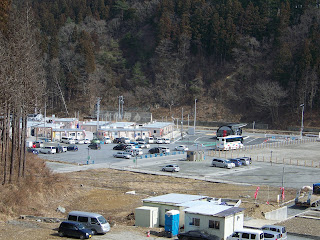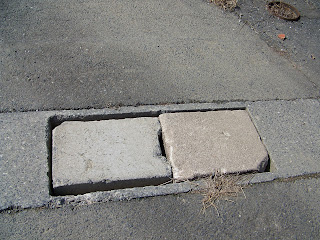I intended for this to be posted last week but my schedule was thrown off after I heard about the Boston Marathon bombings. My brother and several of my cousins live in Boston (all fine thankfully) and on Friday one of the suspects was captured not too far away from where my brother works. Scary stuff. So anyway I was kind of stuck in a moment last week but I'll try to get another post done for next week to make up for the delay.
So... a new school year has started (I'll get into that at a later time). Today I want to talk about something that I found rather interesting that was brought up in one of my third year middle school classes. The class had finished reading a brief summary of the movie E.T. (which one of the book's characters claims is "the most moving movie"... well it's the comparative/superlative chapter so I guess they needed some kind of example...). Anyway, the book makes a point to mention that E.T. says "I'll be right here," (while pointing at Elliot's head) in the scene where he's leaving Earth; they even have a hand-drawn picture of it. After the class had finished reading, Shingo-sensei asked me where my 'mind' was located; I pointed to my head. Next he asked the class (in Japanese) where they thought their 'mind' was; the students pointed to their hearts.
I had noticed in the past (while watching subtitled anime) that sometimes a character would use the word 心 (kokoro) which I had learned as 'heart' but the subtitle would say 'mind'. With this in mind (haha), I realized that some of the Japanese characters I've learned actually make more sense:
意 feeling, thought: combines kanji for sound (top) and mind (bottom)
忘れる (wasureru) to forget: combines kanji for death and mind
思う (omou) to think: combines the kanji for rice paddy and mind... well I don't know how the rice paddy fits in but it's important that they're using the kanji for heart/mind instead of say 'head'.
So, later that day in the teacher's room I was getting more details from Shingo-sensei and telling him how in America we say that thoughts come from the brain and feelings come from the heart. He said that in Japan thoughts and feelings come from the heart.
me: So, what's the brain used for?
Shingo-sensei: Memories.
me: Ah, that's the same then.
It was kind of weird though, when I first saw the description in the textbook about E.T. pointing to Elliot's head I thought that there must've been some mistake. I hadn't seen the movie in many years but I thought that in an emotional parting a person (or alien) would be more likely to point to the heart (the source of the feelings); like the song 'You'll be in my Heart.' I thought that the textbook might even have purposefully modified their summary just so they would be able to have a footnote about how some people consider the mind to be in the brain (the textbook tends to stretch the truth every now and then- I mean, in the same chapter they called E.T. a "cute, little alien"). But of course when I found a screenshot online, E.T. really was pointing to Elliot's head. Hmmm, I guess I need to watch the movie again.
Speaking of pointing at people- in Japan it's totally fine to do so (well it's not rude anyway). Also, consider this situation: a coworker calls out in your general direction, "Hey, can you help me with this?" and you say, "Who, me?" while pointing to yourself. OK stop and consider - where would you be pointing? In America you'd probably point to your chest when referring to yourself. In Japan you point to your face.
OK, one more story- a few months ago I showed some of my students my middle school yearbook that I brought from Massachusetts. As I passed it around the class and told the students where my picture was I heard some of them say things like, "Wow, everyone looks the same!" or "I can't tell them apart!" - which I found amusing. As I was comparing my yearbook to the Hashi Junior High School yearbook later on I noticed that in my yearbook nearly all the students were smiling (and at the time had certainly been encouraged to smile by the photographer) but in the Japanese yearbook there were no teeth showing and most students (and teachers) looked serious. I've read that in Japan sometimes smiling and laughter are looked down on (especially by older generations) because it makes a person seem somewhat frivolous and maybe even like a slacker. Thus in something like a yearbook where you are representing your school and possibly how you feel about your own education you're encouraged to be serious. Of course if some Japanese teenagers are taking pictures with their friends then everyone will smile. And as a final fun fact: the Japanese word for 'smile' and the one for 'laugh' is actually the same word 笑い (warai).
And now for an amusing photo:
Notice that the company's slogan appears to be: "YOUR CHEEK MIGHT DROP." This is probably based on the expression 'your jaw will drop' though I can't fathom why they changed 'jaw' to 'cheek' and why it now seems like a possibility rather than a certainty. Also notice- the company has been around for a full two years! (Why do they even mention it at this point?)
Hopefully there will be more next week!
Tuesday, April 23, 2013
Monday, April 1, 2013
Changes Around Town
So I keep saying how much the town has changed recently. Here are some proof before and after-type pictures to prove it.
Anyway, I haven't been able to get all of the videos to load since my internet is too slow... I'll try again later this week.
 |
| December 2011: I remember being very excited when the first barber shop opened in the area. |
 |
| October 2012: Some new buildings in the process of being built behind the barber shop (still visible on the right). |
 |
| March 2013: The new buildings completed! The yellow one is a sushi and rice bowl restaurant. There are also several barber shops and beauty parlors in the area now. |
 |
| Dec. 2011: The big hospital in the center of town (notice the green medical cross on the roof) surrounded by debris. |
 |
| Oct. 2012: The hospital was torn down during the summer so some of the other buildings from that neighborhood are now visible. |
 |
| Dec. 2011: During high tides the coast would often get flooded, especially near the river. |
 |
| Oct. 2012: A sea wall has been built and the road has been raised so I don't have to drive through large puddles so often anymore. |
 |
| Mar. 2013: Last fall some metal sheet art pieces appeared around town. I assume it's part of an art series of some kind(?). |
 |
| Dec. 2011: Some trees that died after coming into contact with the salt water from the tsunami. Also notice the small white car on the left that was placed on the hill by the tsunami waters. |
 |
| Oct. 2012: Piles of logs from trees in the area, this pile has since disappeared. I wonder where the wood ended up... |
 |
| Oct. 2012: Piles of tree roots that were extracted from the ground after the dead trees were cut down. |
 |
| Feb. 2013: A white heron looking for food by the river. |
 |
| Nov. 2012: Here some building foundations and parking lots are visible. |
 |
| Mar. 2013: Most of the foundations (and parking lots) have since been removed |
 |
| Mar. 2013: The area looks so flat now... |
 |
| Dec. 2011: The radio tower building (on the left). |
 |
| Nov. 2012: Here the area to the right of the building is being cleared of debris. |
 |
| Mar. 2013: Now the whole building is gone. And the shopping area has a brand new bus stop (the cylindrical building a bit to the right of the center). |
 |
| Mar. 2013: Here's the shopping area again; it has tons of souvenir shops, restaurants, beauty parlors, and even a couple of cake shops. |
 |
| Mar. 2013: The shopping area seen from a distance. The area looks so empty without the radio building. |
 |
| Mar. 2013: Some friendly dolphins warn people to stay away from the road drainage system which still hasn't been covered with cement blocks yet. |
 |
| Mar. 2013: A helpful citizen decided to cover this part of the drainage system with some random cement blocks. They don't fit particularly well, but most cars can drive over it safely now. |
 |
| Mar. 2013: The same driveway with the improvised cement blocks. Also notice the fruit stand in the background to the left. |
 |
| Dec. 2011: The fruit stand looked a bit brighter last year since it had just opened and was freshly painted. |
 |
| Mar. 2013: The fruit stand now boasts two vending machines. |
 |
| Feb. 2013: A local government building that was built last year. It houses the Board of Education among other departments. |
 |
| Mar. 2013: Some of the ever-present diggers. These ones are working around what used to be the train tracks. |
 |
| Dec. 2011: I was so happy when we got a laundromat down the road since it meant that we didn't have to dry our clothes inside the house anymore. Very few Japanese homes have dryers. |
 |
| Mar. 2013: Now that same laundromat has a dry-cleaners next door. There is also a fruit stand on the right and a cafe behind. |
 |
| Dec. 2011: I posted this picture last year - notice that the land still looks pretty torn up. |
 |
| Mar. 2013: Now the land has been smoothed down. I still don't know if there will be any new buildings built in this particular part of town. It might end up just becoming a park. |
 |
| Mar. 2013: Then again, with all of these building supplies maybe there will be some new structures after all. |
Subscribe to:
Comments (Atom)


